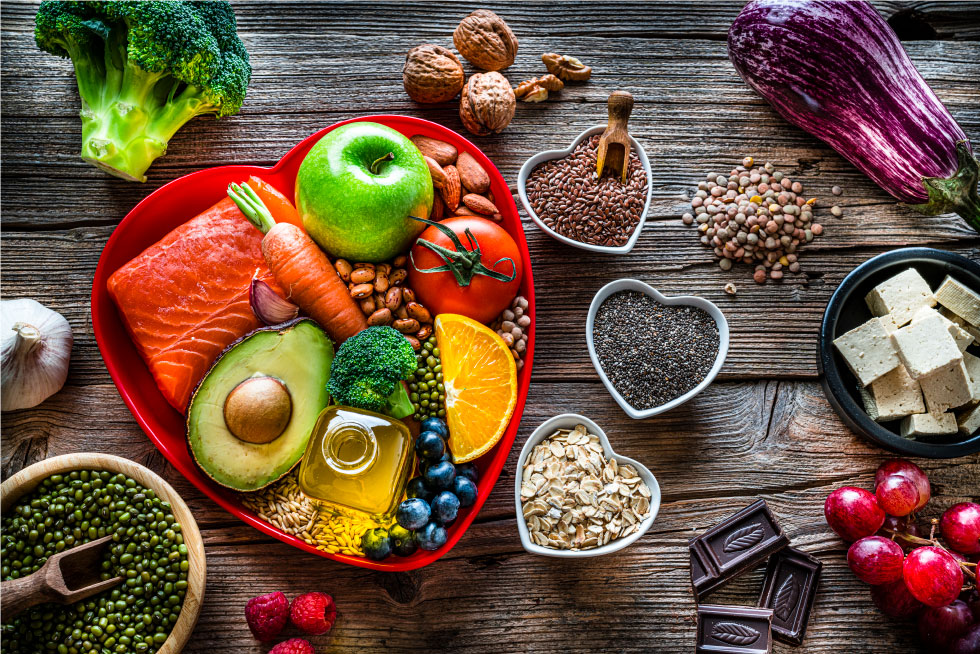
It’s All About More Color
Heart health is not just about limiting saturated and trans fats as well as sodium. Heart health is just as much about what things you can add to your diet in order to receive all of the necessary vitamins and minerals to prevent heart disease, as well as other chronic diseases. Adding fruits and veggies to your diet is a great way to increase your intake of vitamins and minerals. However, getting a variety of fruits and vegetables in is just as important as eating them in the first place. There are 5 different color groups of produce that all offer their own benefit, and it is important to consume a variety of colors every day in order to receive all of the necessary vitamins and nutrients.
Blue & Purple
The compound that causes some fruits and vegetables to be purple or blue is called anthocyanin. Anthocyanins have many health benefits, including antioxidant, anti-inflammatory, anti-viral, and anti-cancer benefits. Anthocyanins also appear to improve heart health by improving cholesterol levels, blood sugar metabolism, and high blood pressure. Examples of blue and purple produce include blackberries, blueberries, eggplants, plums, grapes, and raisins.
Red & Pink
Anthocyanins or carotenoids, a different plant chemical, can cause produce to be red or pink. Carotenoids also have antioxidant properties and can help protect against chronic conditions. Beta carotene, the inactive form of vitamin A, is considered a carotenoid along with lutein and lycopene. Carotenoids can improve your eye health and cardiovascular health as well as protect you from cancer. Examples of red and pink produce include watermelons, tomatoes, sweet potatoes, eggs, cherries, red apples, red peppers, and red potatoes.
Orange & Yellow
Carotenoids also give an orange and yellow color to produce. Examples of orange and yellow produce include carrots, cantaloupe, lemons, mangoes, yams, yellow pepper, orange peppers, sweet potatoes, and tangerines.
Green
The chemical that makes plants green is called chlorophyll. Chlorophyll has antioxidant and anti-cancer properties. Examples of green produce include limes, kiwis, spinach, green apples, green grapes, zucchini, cucumbers, peas, celery and broccoli.
White
The compound that makes some produce white is called anthoxanthins. Anthoxanthins are in the same family as anthocyanins, so they have the same benefit for the human body. Examples of white produce include potatoes, cauliflower, artichokes, onions, and garlic.
